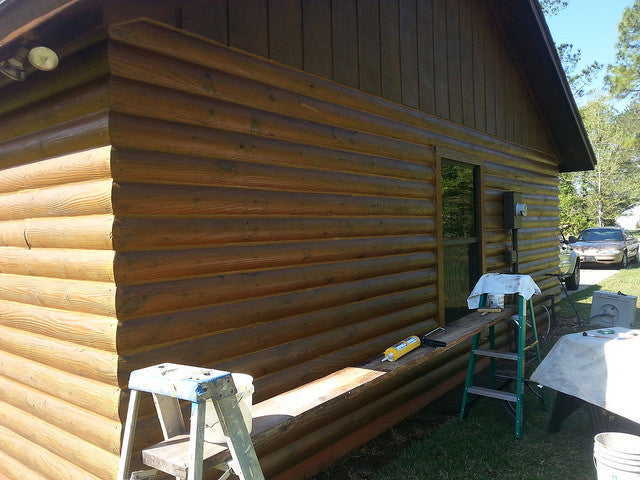Chinking Repair: How to Determine the Moisture Content of Wood

Chinking is the glue that holds many log homes together. This material doesn't always last forever, though, especially when environmental conditions aren't ideal. Before taking on a significant chinking repair project, it's important to assess the moisture levels in the raw materials. Learn how, and why, it's necessary to determine the moisture content of wood prior to applying chinking.
How Chinking Works
Log cabins can demonstrate a number of different construction methods, but many older and newer log homes are built with hand-cut logs. While some logs are cut in such a way that allows them to slide together for a tight fit, others stay in place simply by stacking one atop the other. With the latter method, filling in the gaps between the logs becomes essential to your home's security and your family's comfort. This process, known as chinking or caulking, relies on an acrylic compound to connect the logs and create a less permeable barrier overall.
Why Moisture Content Matters
While many log homes need chinking in order to maintain their solid façade, not all homes are in the right condition for applying chinking. In fact, you should only apply this material to wood that has a moisture content of 23 percent or less. Chinking is designed to expand and contract along with the wood, but too much moisture at the outset can easily cause joint failure.
How to Determine the Moisture Content of Wood
Since wood with a high moisture content can lead to significant problems for your log home, make sure to determine the moisture level before proceeding any further. A basic moisture meter offers a simple and straightforward way to get a reading quickly, but be sure to follow the instructions for your unit closely. Some devices work best with readings taken just below the surface of the wood, while others require readings from the center of the log. Still other devices are designed to produce accurate readings only for certain types of wood, so confirm that you've purchased the right meter to match your home's wood type.
Which Type of Moisture Meter to Use
To measure the moisture content in your log home, you'll usually have two options for meter devices.- Resistance Moisture Meters: These devices have a single pin that measures moisture up to 2.5 inches below the surface. For an accurate reading, you'll need to insert resistance moisture meters parallel to the wood grain. These devices are also sensitive to the wood temperature, so be sure to factor this detail into the equation if possible.
- Dielectric Moisture Meters: These devices operate solely on surface contact, so they don't leave marks on the wood. Since dielectric moisture meters can be sensitive to wood type, be sure to adjust the device to accommodate for your log cabin's wood species.
When you live in a home that is made with unique construction methods, log home maintenance is critical to keeping your space healthy, sustainable, and functional all year round. To ensure a longer life for your log cabin home, don't neglect to take these precautionary steps prior to repairing or adding to existing chinking.
Image via Flickr by JAHLUKA




